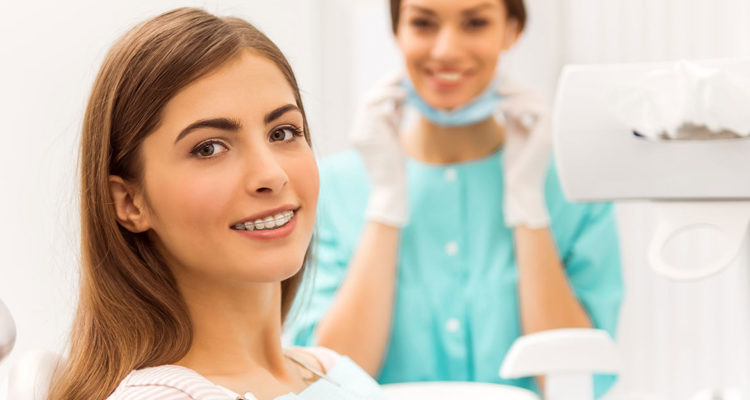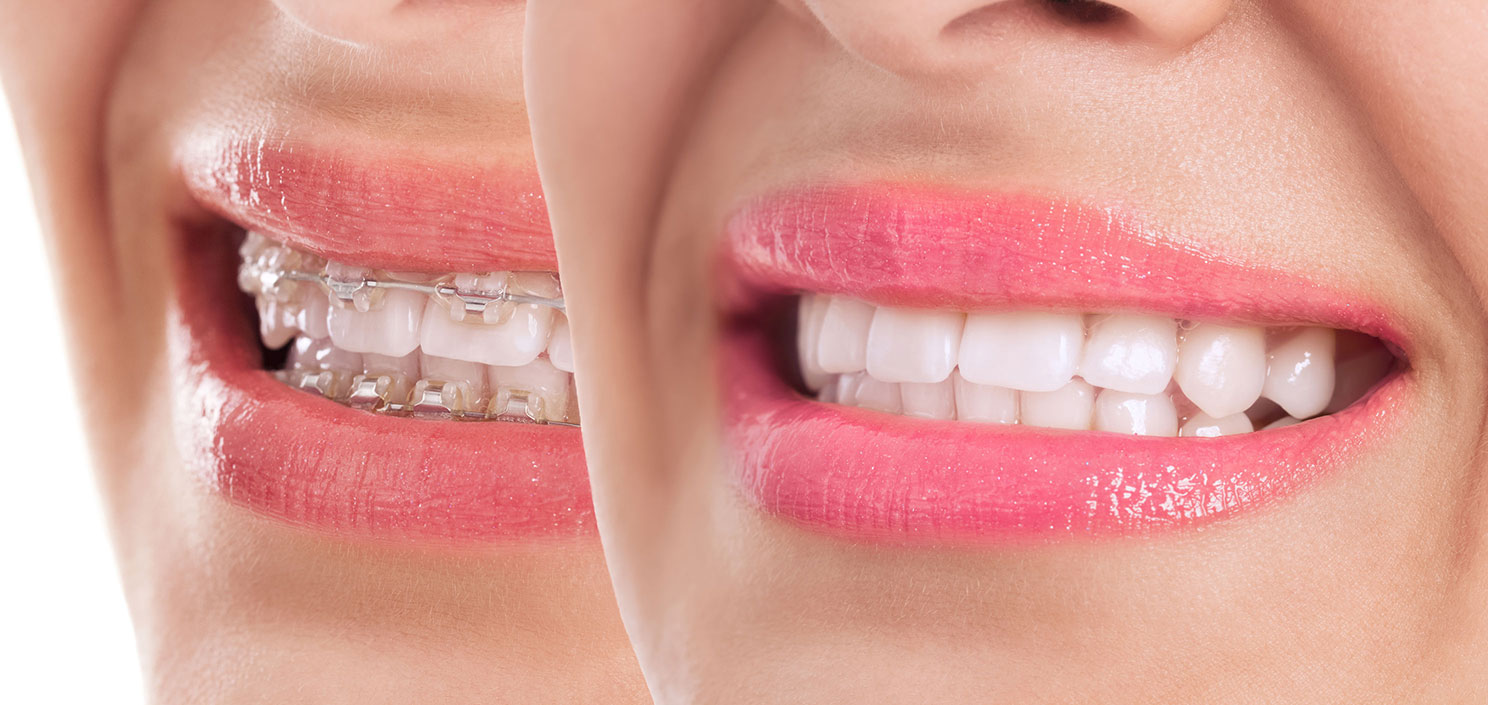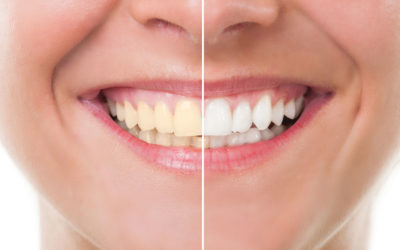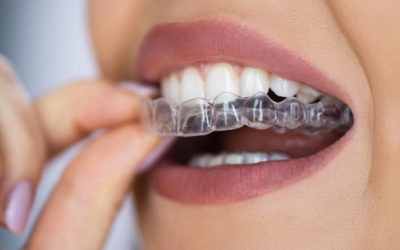
Orthodontic treatment: what's new for a beautiful smile?
Orthodontics has come a long way in recent years, bringing many innovations to improve tooth correction and deliver a perfect smile at any age. This article explores the latest advances in orthodontics, giving practical advice for those considering orthodontic treatment.
Orthodontic appliances: constantly evolving
Traditional orthodontic appliances have undergone a significant transformation. New technologies have made it possible to create more effective and less visible devices, making treatment more comfortable for patients.
Metal braces, although still in use, are gradually giving way to more discreet solutions such as ceramic braces or transparent aligners. These alternatives offer not only comparable efficacy but also more pleasing aesthetics, which is particularly appreciated by adults.
Transparent aligners
One of the major revolutions in orthodontics is undoubtedly the introduction of transparent aligners. These removable devices allow teeth to be straightened without the need for traditional brackets. They are virtually invisible, a considerable advantage for the appearance-conscious.
What's more, transparent aligners are custom-designed using 3D imaging software, guaranteeing a perfect fit and optimal treatment efficiency. They do, however, require strict discipline, as they must be worn for at least 22 hours a day to be effective.
Lingual braces
These braces attach to the back of the teeth, making treatment virtually invisible when smiling. They offer the same advantages as traditional braces in terms of correcting dental malposition, but with greater discretion.
Lingual braces do, however, require some adaptation. Proximity to the tongue can cause temporary discomfort, and requires rigorous oral hygiene to avoid complications.
Advanced technologies for personalized care
Digitalization and technological advances have also transformed orthodontic treatment monitoring. Today, it's possible to benefit from personalized, ongoing monitoring thanks to innovative tools.
Intraoral scan
The intra-oral scanner enables precise digital impressions of teeth to be taken, making plaster molds obsolete. This technology offers a number of advantages: speed, patient comfort and extremely accurate results.
What's more, the images obtained can be used immediately to plan orthodontic treatment, enabling faster, more adaptive design of braces as the dentition evolves.
3D printing
3D printing plays a crucial role in the manufacture of customized orthodontic appliances. This technology makes it possible to produce custom aligners, splints and other devices with unrivalled precision.
3D printing also speeds up production times, enabling patients to start treatment quickly. Combining this technology with the intra-oral scanner creates a fully integrated and efficient treatment process.

Adult orthodontics: increasingly popular
It's never too late to achieve the perfect smile. Adult orthodontics is no longer just for children and teenagers. Many adults now choose to correct their dental imperfections thanks to advances in this field.
Adults' motivations for undergoing orthodontic treatment vary. Some simply wish to improve their aesthetics, while others seek to resolve functional problems linked to dento-maxillofacial anomalies.
Treatment options for adults
As mentioned above, clear aligners and lingual braces are popular choices for adults. These solutions offer the advantage of deterring prying eyes while effectively treating dental malposition.
For more complex cases, combinations of techniques may be required, such asdentofacial orthopedics combined with minor surgery. This approach rectifies both tooth alignment and underlying bone structures.
Reimbursement and treatment costs
The cost of orthodontic treatment can vary considerably, depending on the complexity of the case and the technologies used. While health insurance may cover some costs for children, treatment for adults is often out-of-pocket.
However, some mutual insurance companies offer partial reimbursement for adult orthodontics. It is therefore advisable to check the options available with your insurer before starting treatment.
- Assessment of specific needs by a qualified orthodontist.
- Personalized treatment planning.
- Modern technology for optimum results.
- Regular follow-up and any necessary adjustments.
The importance of consulting a specialist
A crucial aspect before starting any orthodontic treatment is to consult a qualified specialist. An orthodontist has the skills and experience to correctly assess dento-maxillofacial anomalies and determine the most appropriate treatment.
Early consultation can prevent future complications and ensure that corrective measures are tailored specifically to the problem at hand. What's more, our specialists have the knowledge they need to make the best use of the cutting-edge technologies mentioned above.
When to start treatment
Although orthodontics can be beneficial at any age, there are certain times when treatment is most appropriate, such as during childhood or adolescence, when teeth and bone structures are still developing.
Nevertheless, adult treatments should not be neglected, as they can significantly improve oral health and quality of life. All you need to do is choose the right moment carefully, based on the advice of your orthodontist.
Considerations for children
For children, early detection is essential. A first visit to the orthodontist as early as seven years of age enables early detection of any developmental abnormalities. Early interventions can simplify potentially more complex future treatments.
Dentofacial orthopedics is very useful in young patients, guiding the growth and development of the jaws to ensure harmonious alignment of the dentition.
Key factors for successful treatment
To ensure the success of orthodontic treatment, several factors need to be taken into account. It's important to scrupulously follow the orthodontist's recommendations, maintain rigorous oral hygiene and follow the regular visit schedule.
Good communication with your healthcare professional makes it easier to monitor and adjust your treatment. This ensures that any necessary modifications are made in good time to optimize the final results.
Daily hygiene and care
Wearing braces involves special daily maintenance. It's crucial to clean braces after every meal to prevent plaque and food build-up, which could lead to cavities or gum inflammation.
Dental appointments for professional cleanings are also recommended to maintain optimal hygiene and monitor the progress of orthodontic treatment.
Compliance with wearing instructions
For removable devices such as clear aligners, adherence to the recommended wearing time is essential for treatment efficacy. Neglecting these instructions can prolong overall treatment time and reduce results.
Fixed braces, on the other hand, require regular adjustments. Making sure you don't miss an appointment allows you to make the necessary adjustments and move towards a perfectly aligned smile.
Orthodontic treatment at Centre Dentaire Lancy
Center Dentaire de Lancy offers orthodontic services for children, adolescents and adults. Orthodontic treatments include traditional solutions such as fixed appliances (braces) and more discreet options, such as clear aligners, to align teeth and correct bite problems.
The orthodontists at Centre Dentaire Lancy assess each patient's situation and draw up a personalized treatment plan to ensure optimum results and appropriate follow-up throughout the course of treatment.
Discover also the Centre Dentaire Chêne-Bourg and the Centre Dentaire Champel





